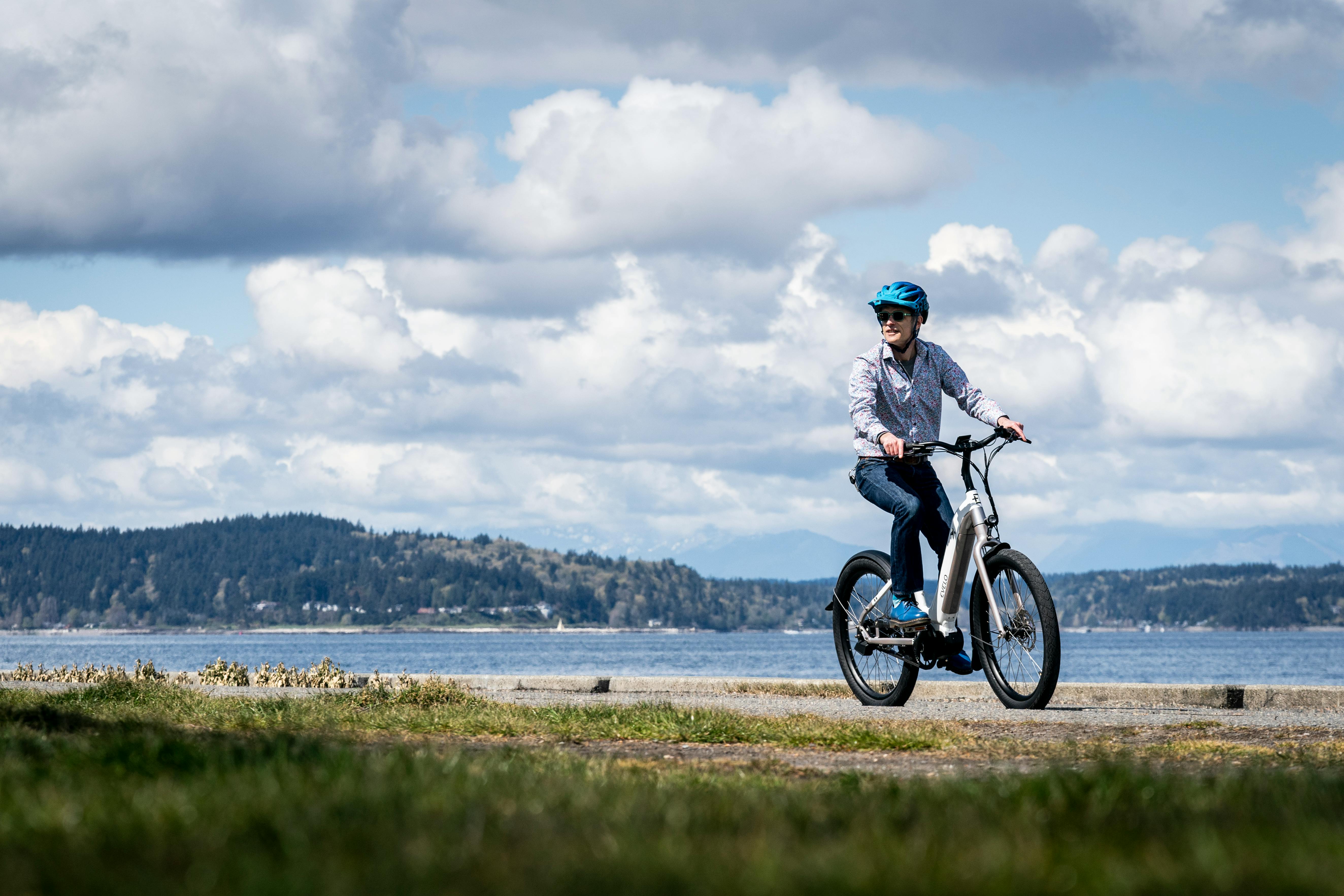Why E-Bikes Are Essential During Hurricane Recovery
When hurricanes strike, traditional transportation fails. When roads are blocked by downed trees, e-bikes can simply be lifted over or slide under the obstacle, allowing them to overcome obstacles that cars can't. This mobility advantage makes proper e-bike preparation crucial for post-storm recovery and emergency situations.
A ride of just a few miles to a water distribution center or medical facility can save hours of walking and conserve critical energy. Your Tamobyke can become a lifeline when other transportation methods are unavailable.
Tamobyke Model Terrain Suitability Analysis
Based on your fat-tire e-bike collection, here's how each Tamobyke model performs in different hurricane-related terrain conditions:
Tamobyke V20 PRO Electric Bike
- Optimal Terrain: Urban debris navigation, flooded streets (shallow water)
- Hurricane Applications: Emergency supply runs, evacuation assistance
- Storm Advantages: Balanced power and maneuverability for varied post-storm conditions
Tamobyke T16 Commuter Electric Bike
- Optimal Terrain: Paved roads with minor debris, neighborhood evacuation routes
- Hurricane Applications: Quick emergency transportation, communication relay
- Storm Advantages: Lightweight design for easy lifting over obstacles
Tamobyke T63 Commuter Electric Bike
- Optimal Terrain: Mixed urban surfaces, moderate debris fields
- Hurricane Applications: Medium-distance emergency travel, supply chain support
- Storm Advantages: Reliable performance in challenging post-storm conditions
Tamobyke V29 PRO Electric Bike
- Optimal Terrain: Heavy debris, sand-covered roads, rough post-storm surfaces
- Hurricane Applications: Long-range emergency missions, rescue support
- Storm Advantages: Dual battery system provides extended range for critical operations
Tamobyke T73 Pro Max Electric Bike
- Optimal Terrain: Extreme terrain, deep sand, severe storm aftermath
- Hurricane Applications: Emergency response, heavy-duty recovery operations
- Storm Advantages: Dual motor system conquers challenging post-hurricane landscapes
Tamobyke T73 Max Electric Bike
- Optimal Terrain: All-terrain post-storm navigation, evacuation support
- Hurricane Applications: Versatile emergency response, family evacuation assistance
- Storm Advantages: Dual battery system ensures power availability during extended emergencies
Critical Pre-Storm Battery Protection
Before the storm hits, be sure to charge your battery up all the way since you likely won't have access to electricity in the immediate aftermath of the storm, then store the battery in a safe location. Battery protection is paramount because that salty water can wreak havoc with electrical connections in submerged batteries during storm surge conditions.
Essential Battery Safety Steps:
- Full Charge Protocol: Achieve 100% battery capacity before storm arrival
- Waterproof Storage: Remove batteries and store in sealed, elevated containers
- Temperature Control: Keep batteries at room temperature in dry conditions
- Multiple Battery Strategy: For dual-battery Tamobyke models, store batteries separately
Emergency Power Applications
Your Tamobyke battery serves multiple emergency functions beyond transportation. If you lose power and your battery and/or e-bike are still accessible, you can use the USB outlet to keep your devices charged. Additionally, the LED headlight on your e-bike can also be used for emergency lighting when the power goes out.
Pre-Storm Maintenance Checklist
As part of pre-storm preparations, it's a good idea to check your tire pressure and perform any other maintenance that you've been putting off. Complete maintenance ensures your Tamobyke performs optimally when you need it most.
Critical Maintenance Tasks:
- Tire Pressure: Verify optimal PSI for post-storm terrain navigation
- Brake Inspection: Ensure reliable stopping power in emergency situations
- Chain Lubrication: Protect drivetrain from moisture exposure
- Electrical Connections: Secure all wiring and connection points
- Emergency Kit Assembly: Attach repair tools and first aid supplies
Storm Surge and Water Damage Prevention
Fat-tire e-bikes face unique challenges during hurricane conditions. Storm surge presents the greatest electrical risk, requiring specific protective measures:
Water Protection Strategies:
- Elevation Storage: Move e-bikes to highest available floor
- Covering Protocol: Use waterproof tarps with secure anchoring
- Component Isolation: Remove batteries, displays, and sensitive electronics
- Drainage Preparation: Position bikes to prevent water accumulation
Post-Storm Navigation Safety
Caution should be taken for hazards such as downed power lines and other debris when using your Tamobyke for post-hurricane transportation. The fat-tire design of your Tamobyke models provides enhanced stability and traction on compromised surfaces.
Navigation Safety Protocols:
- Power Line Awareness: Maintain safe distance from all electrical hazards
- Debris Assessment: Test surface stability before full weight commitment
- Visibility Enhancement: Use emergency lighting systems and reflective gear
- Communication Planning: Establish check-in procedures with family/emergency contacts
Fat-Tire Advantages in Storm Conditions
The fat-tire design of your Tamobyke collection provides specific advantages during hurricane recovery:
- Enhanced Traction: Superior grip on wet, sandy, or debris-covered surfaces
- Obstacle Navigation: Improved ability to roll over storm debris
- Stability Control: Better balance in challenging post-storm conditions
- Load Capacity: Ability to carry emergency supplies and equipment
Emergency Preparedness Integration
Your e-bike preparation should integrate with broader hurricane preparedness planning. Consider your Tamobyke as part of a comprehensive emergency transportation strategy that includes evacuation routes, supply distribution, and family communication plans.
For additional hurricane safety information, consult the National Hurricane Center and FEMA emergency guidelines. The American Red Cross provides comprehensive disaster recovery resources.
Conclusion
Hurricane preparedness for e-bike owners requires specialized strategies that protect both equipment and maximize emergency utility. Your Tamobyke's fat-tire design and robust construction make it an ideal emergency transportation solution when properly prepared and maintained. By following these guidelines, you ensure your e-bike remains a valuable asset throughout hurricane season and recovery operations.
Remember: proper preparation today ensures your Tamobyke serves as a lifeline when traditional transportation fails. Stay safe, stay prepared, and trust in your Tamobyke's capability to navigate the challenges ahead.


Share:
E-Biking in Monsoon Season: Ultimate Tropical Weather Guide